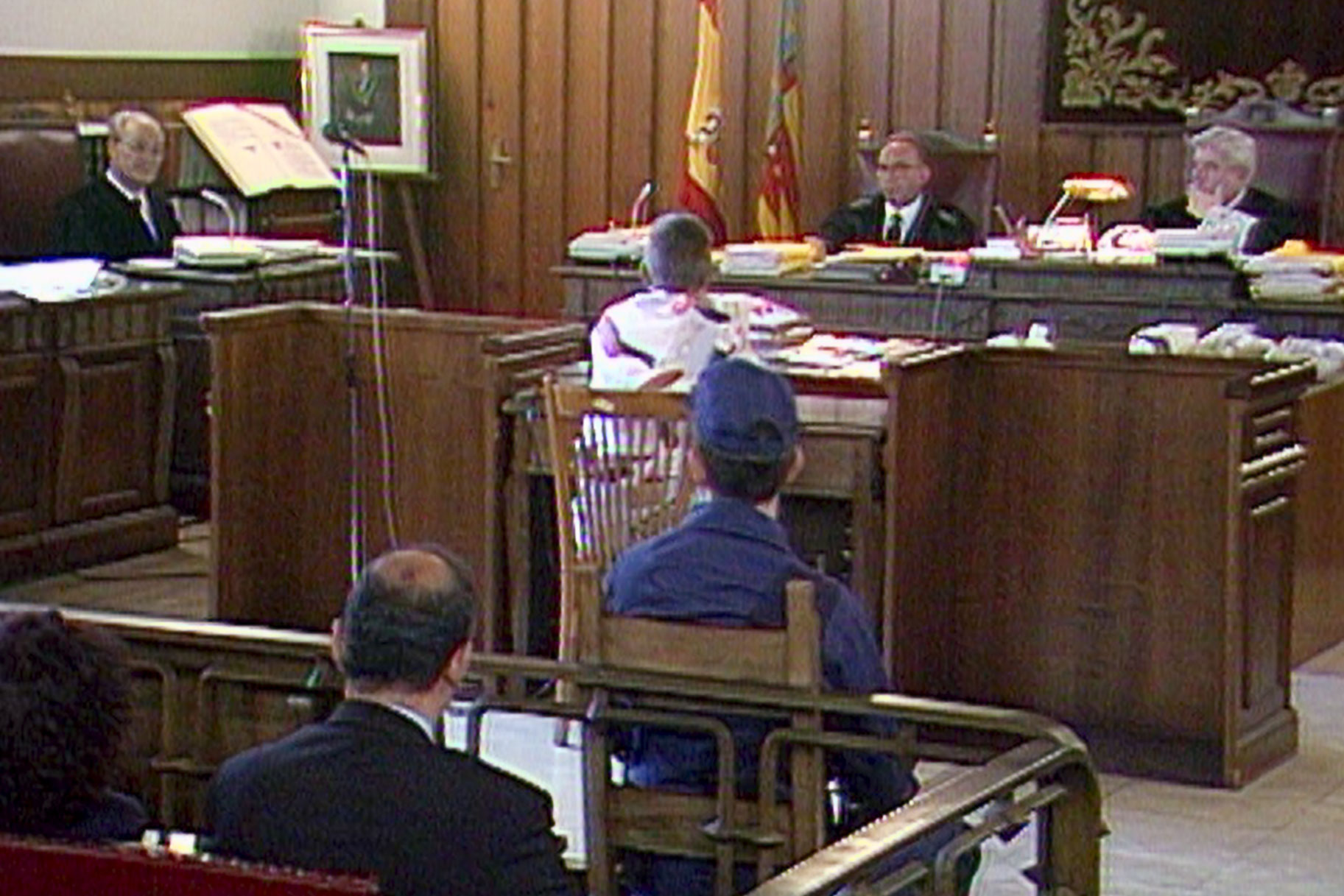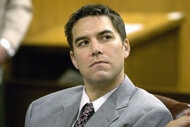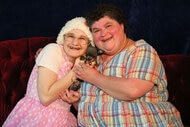Create a free profile to get unlimited access to exclusive videos, breaking news, sweepstakes, and more!
‘The Alcásser Murders’: How Three Teen Girls Met A Gruesome End While Hitchhiking To A Nightclub
Miriam García Iborra, Antonia "Toñi" Gómez Rodríguez and Desirée Hernández Folch mysteriously vanished in November 1992 while hitchhiking to a popular nightclub, leaving few clues to their whereabouts.

They were three typical teen girls who loved to socialize with friends, but when they couldn’t find a ride to a popular dance club, the teens made a fatal mistake that would cost them their lives.
The November 1992 disappearance of Miriam García Iborra, Antonia "Toñi" Gómez Rodríguez and Desirée Hernández Folch, captivated Spain and earned the case unprecedented coverage on television as the public watched as witnesses came forward and the families grieved live on the airwaves.
Nearly three decades later, questions about how the three teens died continue to linger and the lead suspect in the case continues to evade authorities.
Vanished Into The Night
On the night of Nov. 13, 1992, Miriam, 14, Toñi, 15, and Desirée, 14 - residents of Alcásser, just outside of Valencia - wanted to go to the popular nightclub Coolor in nearby Picassent and were desperately searching for a way to get themselves there, according to the Netflix docu-series ‘The Alcásser Murders.’
“That evening I was with my mother when the phone rang. My sister asked my father if he could take them to the night club in Picassent. And my mother told her no because my father was sick. He had a fever. He couldn’t get out of bed. So they should forget about going to Coolor,” Miriam’s brother Martin García said in the series.
But the teens didn’t forget about going to Coolor and instead decided they would hitchhike to the club. A couple picked the three teens up and dropped them at a gas station along the way. They’d be seen by a friend walking away from the gas station just a short time later.
“And they were walking towards the town’s center,” friend Jose A. Cano would later say in a news clip. “Anyway, when they saw me, they stopped to greet me, and they continued walking.”
Another woman would later tell authorities that she saw the teens get into a white car with at least two men inside, but the three teens would never be seen alive again.
The Search Begins
As the night when on, the young girls' families began to worry when they didn’t come home at their usual time.
Toñi’s sister, Luisa Gomez, recalled that she had gotten off work at about 8:30 p.m. that night.
“And I came home and she wasn’t there. Which was quite normal,” she later recalled. “But by 9 p.m. she used to already be at home. And at 10 p.m., we started to worry.”
Miriam’s family was also growing concerned, and her father Fernando García went out to search for the missing girls.
“No one knew anything. No one had seen the girls,” he said in the series. ”I went to the nightclub Coolor in Picassent. On my way back, I stopped by the Civil Guard station to tell them that my daughter had disappeared. The sergeant told me that it was still 11 p.m. and maybe it was just some young kids’ foolishness. Until 24 hours had passed, I couldn’t report her missing.”
But by the next day, authorities were also becoming concerned.
José Manuel Alcayna, the former deputy mayor of Alcásser, said they organized a search party with 12 vehicles and began dispersing missing person flyers across the entire Valencian community.
“What we had to do was make it very clear that the girls hadn’t left voluntarily,” he said.
As police began to scour the area and abandoned buildings, Fernando García turned to the media, quickly earning the case unprecedented levels of coverage.
The disappearance struck fear into other teens in the area.
“During that time, everyone of that age did the same. We hitchhiked to get to the nightclub in La Alcuida,” said Placer Forés. “Since that day, no more.”
While some wondered whether the girls had simply run away, several signs pointed away from that theory. Desirée had packed a sports bag to go skating the next morning; Miriam left behind a money box with around 20,000 pesetas in it; and Toñi had dedicated a song on the radio to a friend she planned to meet the next day.
“They’re very easy-going girls and I don’t think they ran away on their own,” one friend said in an old news clip played in the docu-series.
The Bodies Are Discovered
The teen’s fates would be discovered January 27, 1993 after two beekeepers stumbled upon an arm sticking out of the ground in a rural area in La Romana, Catadau, and called police.
“It was specifically a watch that stuck out of the ground. And you could see the bones from the forearm sticking out. The hand was missing,” Alfonso Cabrera, of the Civil Guard, said of the discovery.
Authorities dug up the area and found three bodies—later identified as the missing teens. The girls had been kidnapped, raped and tortured—with one of Desirée’s nipples being torn off—before at least two were shot in the head.
Near the bodies, authorities found other items as well, including a glove, binoculars, three belts and clothing items.
José Miguel Hidalgo, UCO Captain, said authorities also found papers scattered in the brambles, including a form from someone who had been treated at the La Fe Hospital in Valencia for venereal disease.
Suspects Emerge
The papers led law enforcement to Enrique Anglés, and they arrested Anglés and several others at his apartment that day, including Miguel Ricart, who was often known as “The Blonde.”
“Enrique Anglés when they first interrogated him here at first, he said he killed the girls. Because he was in the nightclub and they didn’t want to dance with him” Juan Pérez, an information group captain with the Civil Guard said in the series.
But authorities soon realized his story didn’t add up—Enrique Anglés appeared to be slow mentally and his family said he was schizophrenic. Police began to focus their attention instead of Enrique’s brother, Antonio Anglés Martins, who authorities believed had borrowed his brother’s social security documents.
His own family described Antonio Anglés as a very violent man.
“No, I didn’t think he could feel empathy for people,” his sister Kelly Anglés said. “He was very cold. We were all afraid of him.”
But, Antonio Anglés would soon disappear—and still remains on Spain’s most wanted list, decades after the crimes were committed.
With Anglés in the wind, authorities turned their focus to Ricart, who was often seen with Antonio.
According to Hidalgo, during an interrogation, Ricart placed himself at the crime scene and named Antonio as the culprit of the murders.
Ricart would make a series of declarations about what he said occurred that night. In a fourth declaration he made in March of that year, Ricart said the pair had picked the three teens up as they were hitchhiking.
“When the girls realized that they were going past the nightclub and they weren’t stopping, they started to complain and the declarant [Ricart] told Antonio to turn around and leave them there. But the latter slapped him on the back of the neck twice and said that in the car, he was in charge,” the statement said.
According to the declaration, Ricart and Antonio took the teens to a hut in Llombai, where they tied the girls up and sexually assaulted two of the girls on a mattress left in the hut. After leaving to grab some sandwiches, the pair returned and Antonio sexually assaulted the third teen.
The following day, they led the teens back toward the car, but Ricart said Antonio tied them up again.
“Antonio took out the gun. He assembled it and pulled the trigger, but there was no shot. So, he assembled it again and the cartridge that hadn’t shot before fell to the floor. Then he shot three times. One for each girl. Now that they were dead, Antonio placed the carpet at the bottom of the pit and threw inside one body after the other. He hid the pile of bodies with the rest of the carpet and then, he threw dirt on top of it,” the declaration said.
Ricart would later deny his involvement in the crimes and said the declaration was made after he had been beaten and coerced by authorities.
Miriam’s father, Fernando García would also doubt authorities’ version of the crime calling Ricart “just a pawn.” He began his own investigation, which he believes showed evidence that the girls may have been killed and tortured by high-ranking officials who kidnapped girls for their own pleasure.
But the court would disagree, and sentenced Ricart to 170 years in prison for his role in the murders. He was later released in 2013. Antonio Anglés has never been found by Spanish authorities.


























